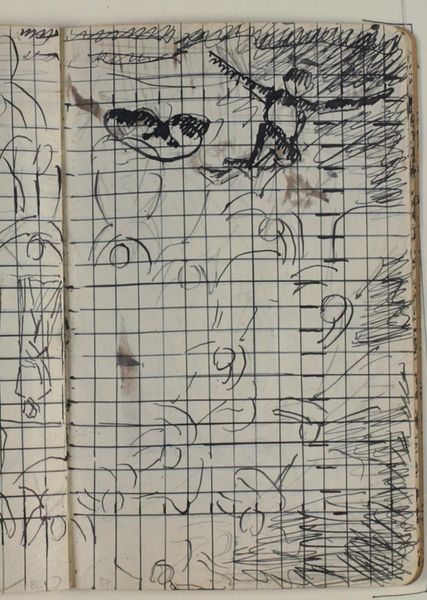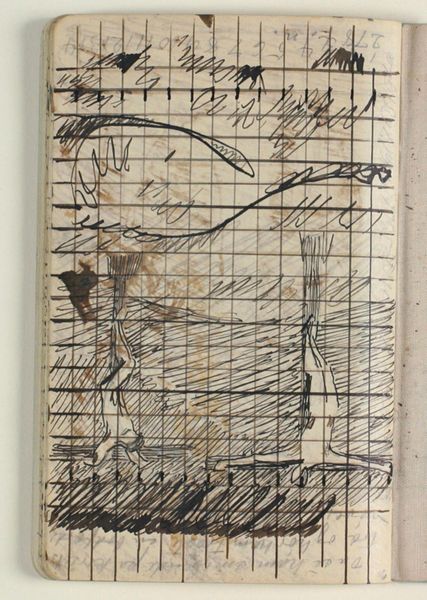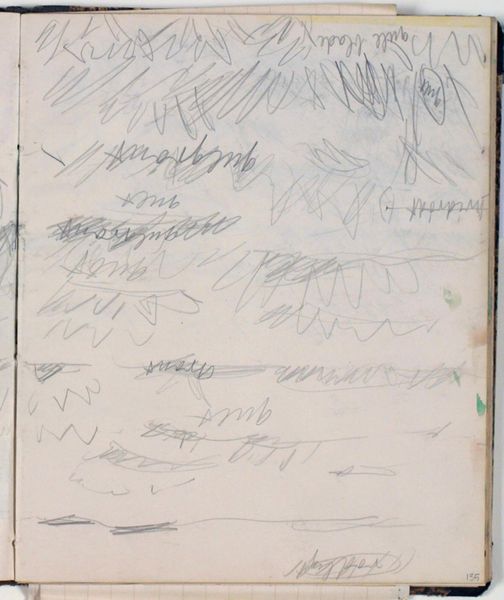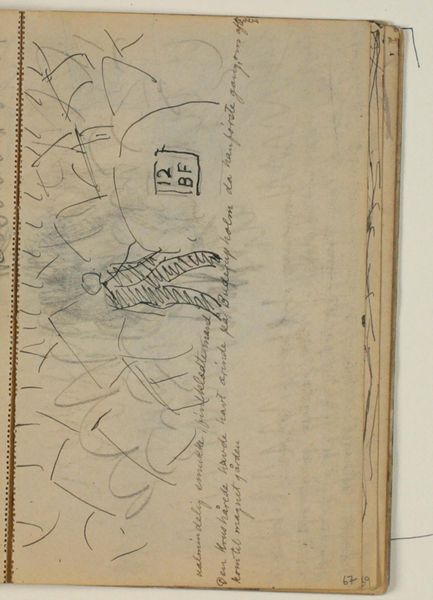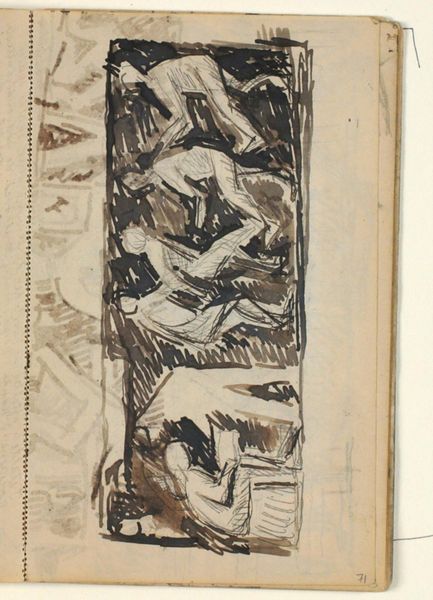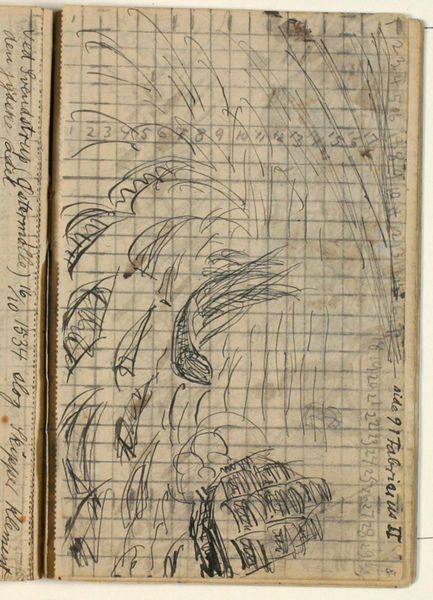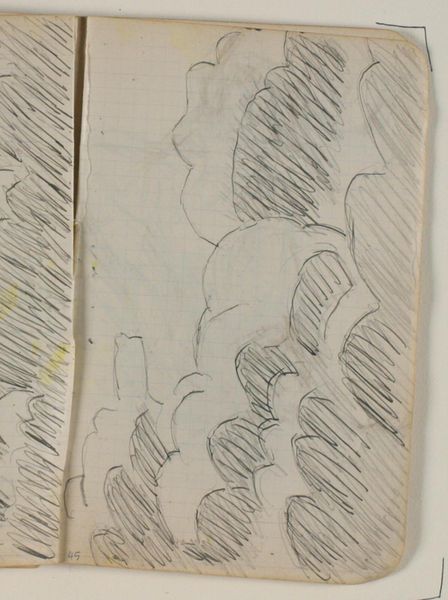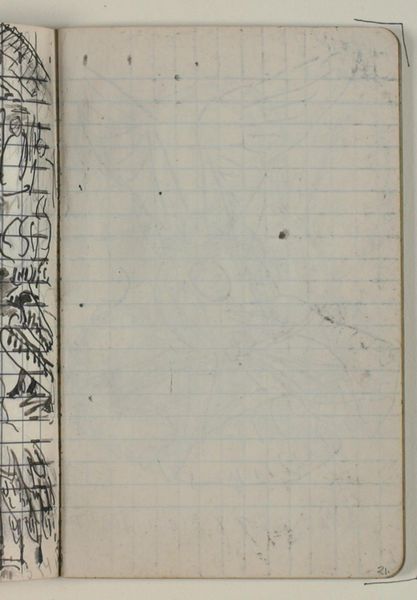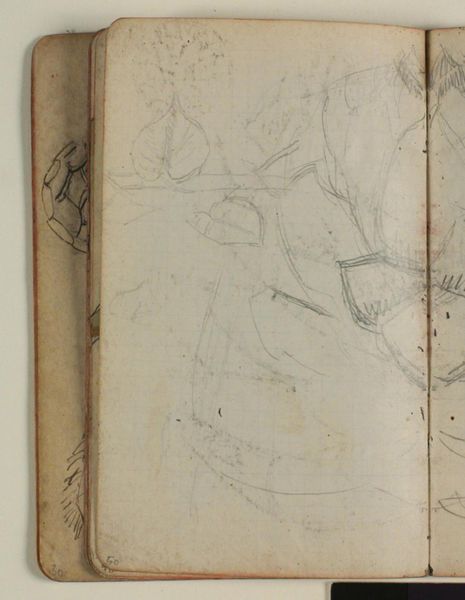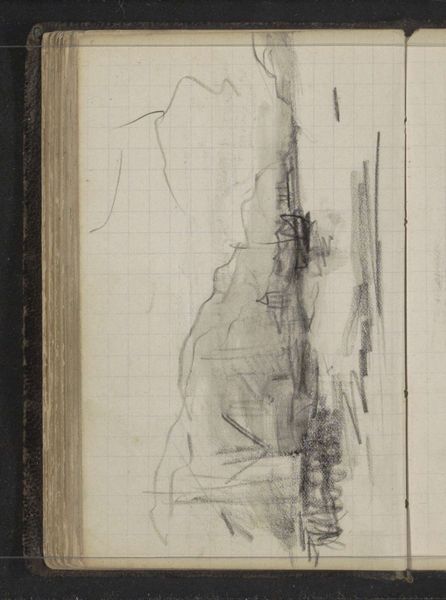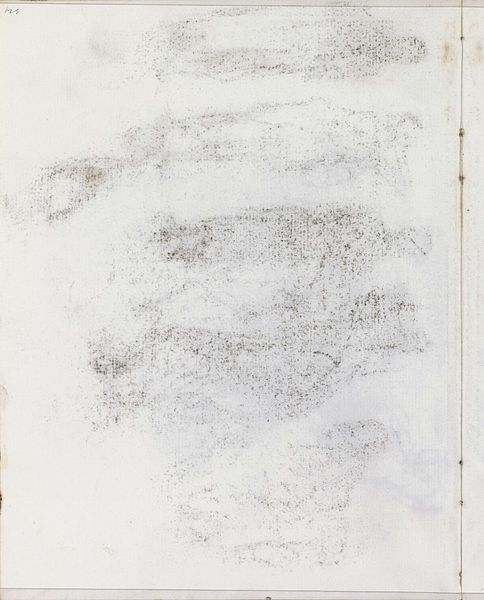
Udkast til "Lars Dyrskjøt skyder tre svenskere", kvadrering 1932 - 1935
0:00
0:00
drawing, paper, ink
#
drawing
#
paper
#
ink
#
coloured pencil
#
geometric
Editor: This drawing, entitled "Udkast til 'Lars Dyrskjøt skyder tre svenskere', kvadrering" by Niels Larsen Stevns, made between 1932 and 1935, employs ink, colored pencil, and perhaps other media on paper. I am immediately drawn to the chaotic energy created by the marks and lines, although there's underlying structure through the squared paper. What is your take on this initial impression, and the composition as a whole? Curator: Indeed, the structure of the squared paper is immediately notable. However, consider the contrast it creates: a rigid, almost mathematical grid juxtaposed with seemingly spontaneous, gestural marks. Note the deployment of curvilinear shapes against straight lines – the artist orchestrates a visual dialogue between order and disorder, restraint and freedom. What does that visual tension evoke? Editor: I suppose the contrast invites me to consider that structure might contain energy or even violence...that a clear, simple organization doesn't guarantee safety. The title makes the subject of 'shooting' explicit, even if the composition itself isn't visually explicit in that regard. Curator: Precisely! Consider the bold application of ink and color, each stroke deliberate in its placement. The work operates semiotically, using abstraction to generate meanings. Editor: So you see the interplay of geometric shapes and free-flowing lines as a deliberate choice to highlight thematic tensions inherent to the content matter? Curator: Without a doubt. Observe also how the materiality of the paper – its texture and grid – interacts with the applied media. It’s not merely a surface, but an integral element in the artwork's visual syntax. Editor: That's such a valuable reminder - thinking of the paper itself as participating in the artistic language, rather than a neutral background. Thank you. Curator: It’s in examining the fundamental building blocks of art that we discover its rich complexities. A dialogue with materiality is always encouraged.
Comments
No comments
Be the first to comment and join the conversation on the ultimate creative platform.
